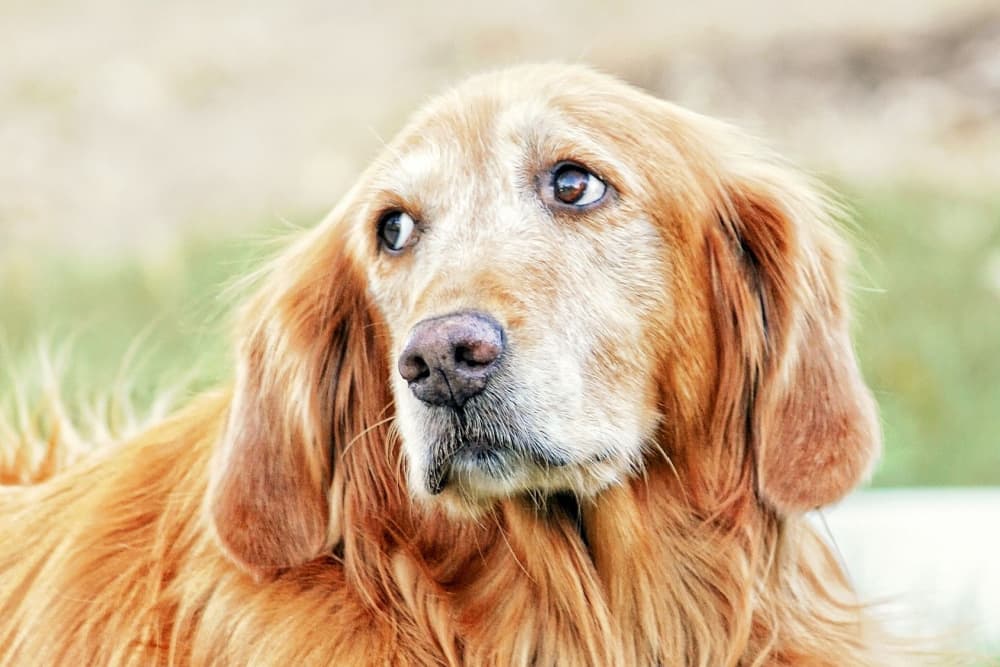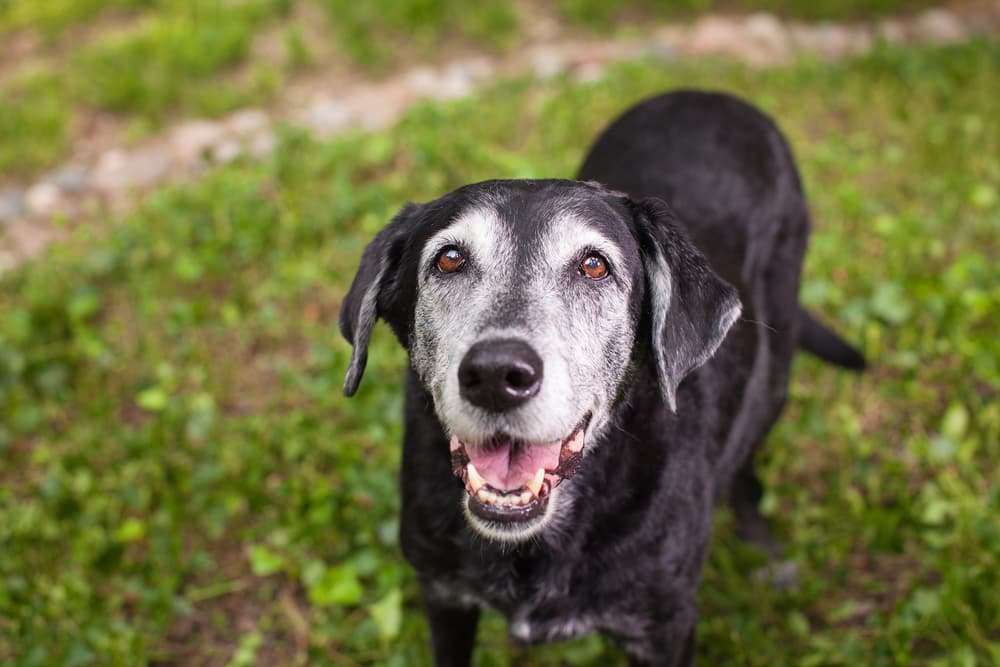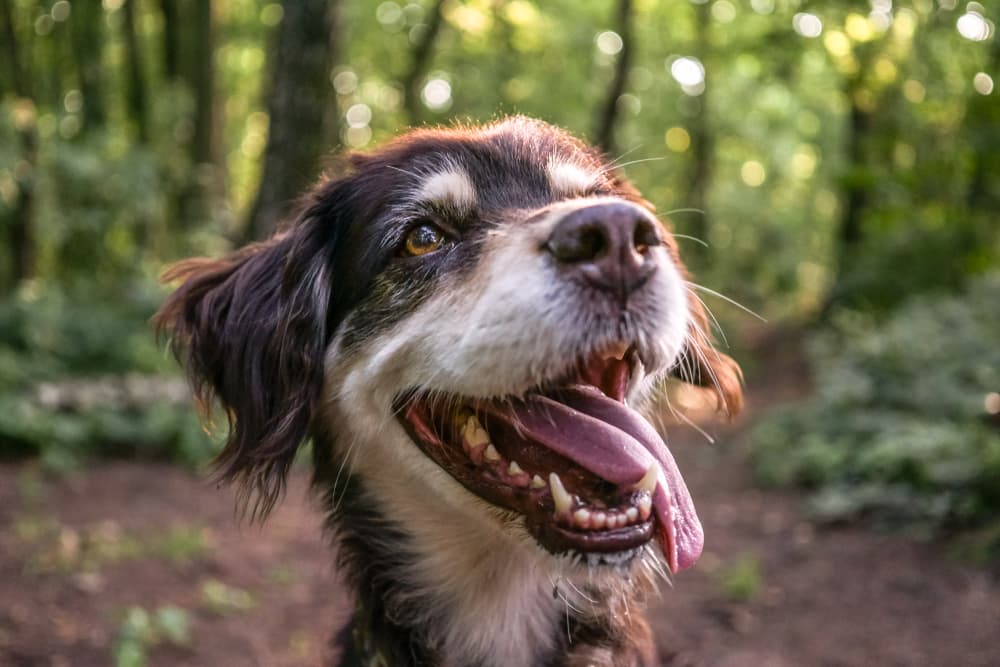4 Fun Training Exercises to Do with Senior Dogs

Much like humans, our dogs go through many changes as they settle into senior-hood. With their age-related aches and pains and diminished hearing and vision, it’s easy to assume that senior dogs are happier chilling on the couch. But while the body might not have the pep of a pup, the lively canine spirit lives on!
Most senior dogs probably aren’t up for an epic hike, but they love the chance to go back to school for some continuing education. It doesn’t matter if you’re brushing up on the basics or focusing on new skills. As long as you take your time and use dog-friendly training techniques you’ll have a surprisingly eager student.
Read on to discover some fun training exercises to do with senior dogs.
Can You Teach an Old Dog New Tricks?

Short answer? Heck yes! Our dogs never lose their love of learning, but there are some special considerations when it comes to training older dogs. When tackling new training, pet parents should understand that dog training exercises for older pups might need to be modified to address any potential physical changes. That means paying attention to every aspect of the training process, including:
Training environment: Physical limitations might make it tougher for senior dogs to perform certain activities, like getting up and down quickly, so make sure the flooring is comfortable and grip-able. Consider the temperature and lighting in the area as well.
Past training: If you’re working with a new-to-you dog rescued through a senior dog adoption there’s a good chance that your pup has had training in the past. It might take some sleuthing to figure out what they do and don’t know!
Timing: Puppies are raring to go 24/7, but senior dog energy has an ebb and flow. Time your training sessions so that your older dog has the right amount of focus and spirit for the work.
Diet: Older dogs can pack on the pounds easily, so make sure to use small, healthy treats.
Physical limitations: Achy joints might mean that a long sit-stay is uncomfortable. Watch your dog to ensure you’re not asking for behaviors that can be painful.
4 Fun Training Exercises for Senior Dogs

When it comes to senior dog training, fun is the name of the game! The following dog training tips will help you make the most of your golden years together.
Arm Cross Sit
Most dogs can’t resist jumping up to greet people, and senior dogs in particular probably have a long history of being accidentally rewarded for jumping on guests. This training trick is an easy way to turn pushy greetings into polite welcomes.
The first step is getting your senior dog to “guess” the behavior that earns a treat, and most dogs usually default to the desired behavior: a basic sit.
To begin, take your pup to a quiet room, come to a stop, and cross your arms over your chest without saying anything. The goal is for your dog to recognize the body language cue instead of the verbal one. Your dog will likely plop into a sit position right away (especially if they know you have goodies in your pocket!), so mark the behavior with a “yes!” or “good!” and hand over the treat.
Repeat the process, walking a few steps, and then pausing to cross your arms and wait for that sit again. It usually only takes a few repetitions for most dogs to connect the crossed arms position with the resulting reward for sitting, at which point you can move training to other parts of the house.
Practice it near entry points in your home with a variety of people and in no time, your formerly jumpy pup will be the perfect canine ambassadog!
Targeting
This behavior is a simple foundation skill that taps into a dog’s natural inclination to explore with the nose. It’s great for seniors because it’s low impact and easy to teach.
All you have to do to begin the process is present your open hand to your dog at their level and then acknowledge them with a verbal marker like a “yes!” or “good!” when they move toward it. Praise your clever dog and give a treat from the other hand.
Continue the process until your dog actually touches nose to palm when you present your hand, and then begin associating a word with the behavior, like “touch” or “target,” by saying the word as your dog performs the behavior.
Continue working on the behavior in a variety of new environments so your dog begins to generalize it, meaning, they can perform it quickly no matter where they are.
Don’t forget to vary your positioning, like switching hands, offering a fist instead of a palm, or doing it while seated. This will make it fluent, so that your dog can perform it everywhere you go!
Stay

If there’s one training cue where most dogs backslide over time, it’s probably “stay.” (With “come” in a close second place!) The good news is a quick brush-up is all it takes to reinforce the basics of this important skill.
The first step is helping your dog understand that you’ll be moving away but they should remain in place. Ask your dog to do a “down” since it’s a more anchored and comfortable position, say “stay,” and then take a single step to the left or right of your dog. (Stepping backward usually encourages dogs to break the stay to follow you.) Immediately step back to your dog and give a treat for remaining in place.
Keep it easy for your dog to win by remaining close during the early stages of training. Once your dog seems comfortable with remaining in place, try stepping away in different directions, and gradually add more distance between you and your dog.
Work up to having your dog hold a stay while adding in everyday distractions, like loading the dishwasher or briefly leaving the room.
Leash Walking
You might be wondering how to leash train an older dog, especially if you’ve just welcomed a new-to-you rescue. Leash walking might be a challenging activity because your senior dog never learned how to walk politely on-leash and has spent a lifetime pulling, or because your dog is transitioning to a different environment than they’re used to and it’s overwhelming. Learning to stroll instead of sled-dog is an important skill for every dog no matter what age.
The basic premise of leash training is simple: pulling makes the walk stop, and keeping a loose leash means moving forward and getting paid with goodies. When you head out for a walk, load up your pockets with small, soft treats, then reward your dog for staying close to you (perfect heel position is not required).
The early stages can be a little messy since the only requirement is that your dog doesn’t pull, which means there might be some leash juggling and tripping! If your dog alerts to something and starts pulling toward it, simply stop walking.
Most dogs will look back at their person after a few seconds of not moving, at which time you can praise them, offer a treat close to your side so your dog comes back into position, and then continue walking. Leash training takes time, but persistence and patience work!
Senior Dog Training: Tips for Success

As with all dogs, the best approach to training senior dogs is using positive reinforcement training, whether doing it on your own at home or in a group setting. The primary consideration with senior dog training is recognizing and working with any physical limitations. For example, dogs with achy joints might need to rest on a throw rug when working on down-stays, or pups dealing with diminished vision might need a brighter training space. Additionally, older dogs tend to pack on pounds easily due to a sedentary lifestyle, so make sure to keep rewards small.
How Long Does it Take to Train an Older Dog?
Based on the old adage, you might think that training an elderly dog is going to be tough, but the reality is that senior dogs have just as much drive, determination, and smarts as the whippersnappers!
The exact amount of time required to train an older dog depends on factors like the skill of the human end of the leash and the type of behavior that’s being taught, but pet parents with seniors can rest assured that it’s no more difficult than training a newbie. Sure, you might have a few less-than-perfect habits to address, but with a little patience and a commitment to having fun, your senior will be wowing fans in no time!









